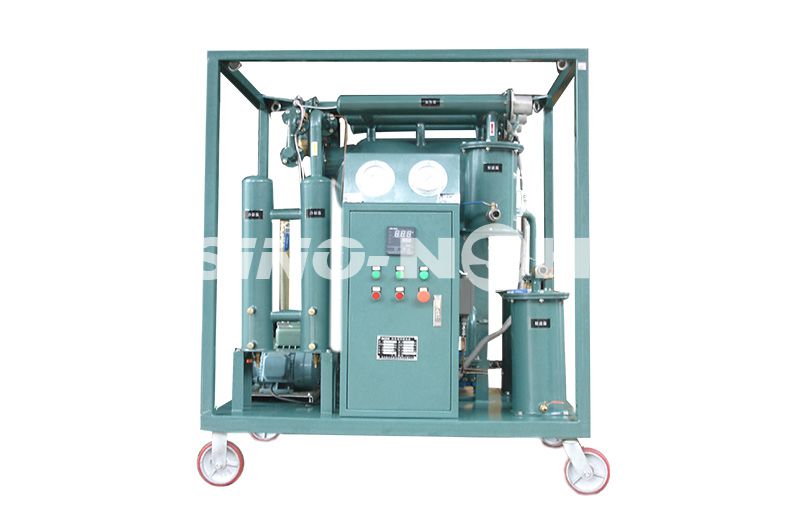E-mail seo@sino-purification.com

Time:2025-01-15 11:24:50 Reading volume:
The transformer oil purification process removes impurities from transformer oil, ensuring the oil remains effective in insulating and cooling electrical transformers. Over time, transformer oil can degrade due to exposure to heat, moisture, and contaminants like dirt, sludge, and gases. Purification restores the oil’s electrical and thermal properties, extending the lifespan and efficiency of the transformer.

1. Filtration:
- Purpose: Remove solid impurities such as dirt, sludge, and dust particles.
- Process: Oil is passed through filters or mesh to trap large particulates. This step improves the cleanliness of the oil and helps prevent damage to the transformer components.
2. Dehydration:
- Purpose: Remove water and moisture from the oil, which can degrade its insulating properties and promote corrosion.
- Process: This can be done using heat and vacuum techniques. Oil is heated to a specific temperature and then subjected to a vacuum, which draws out the moisture. Another method involves using dehydrating agents like silica gel or molecular sieves.
3. Degasification:
- Purpose: Remove dissolved gases (such as hydrogen, methane, and carbon dioxide), which can form due to electrical arcing or other breakdowns in the oil.
- Process: Oil is heated in a vacuum to release dissolved gases, which are then evacuated. This helps restore the dielectric properties of the oil.
4. Deacidification/Neutralization:
- Purpose: Remove acidic compounds that can form as a result of oxidation of the oil. Acids can reduce the oil’s insulating capabilities and cause corrosion.
- Process: Chemical neutralizers or specific adsorbents can reduce the acid content. This step can be done during oil filtration or separately depending on the oil condition.
5. Polishing (optional):
- Purpose: Improve the appearance and final purity of the oil.
- Process: Oil can be passed through activated carbon filters or other fine media to remove any remaining trace contaminants.
6. Reconditioning (Optional):
- Purpose: Restore the oil to near its original specification, especially if the oil is old or highly degraded.
- Process: This may involve adding special additives to improve the oil's properties, such as antioxidants or corrosion inhibitors.
7. Oil Testing:
- Purpose: Ensure that the oil meets the required standards for insulation, dielectric strength, and other properties.
- Process: Samples of the purified oil are tested for parameters like breakdown voltage, moisture content, acidity, and chemical composition. Only oil that meets these standards is reintroduced into the transformer.
Types of Purification Methods:
- Offline (Static) Purification: The oil is drained and processed outside the transformer in a static setup. This is often used in routine maintenance.
- Online (Dynamic) Purification: The purification system is connected to the transformer while in operation, allowing the oil to be purified without shutting down the transformer.
The purification process helps maintain the electrical and mechanical reliability of transformers, reduces the risk of faults, and can extend the operational life of the equipment.